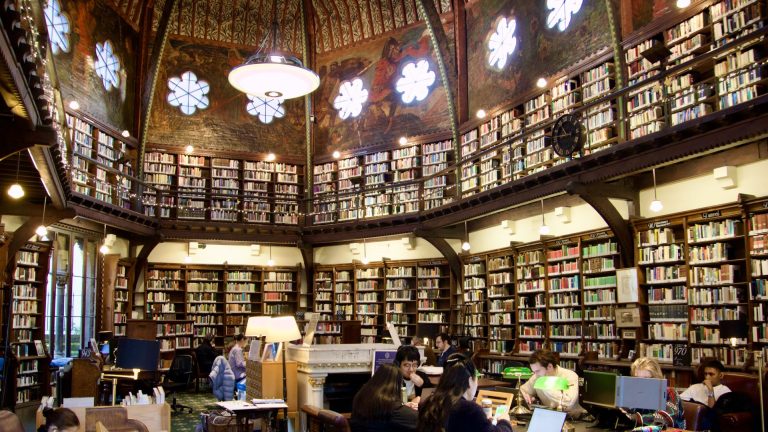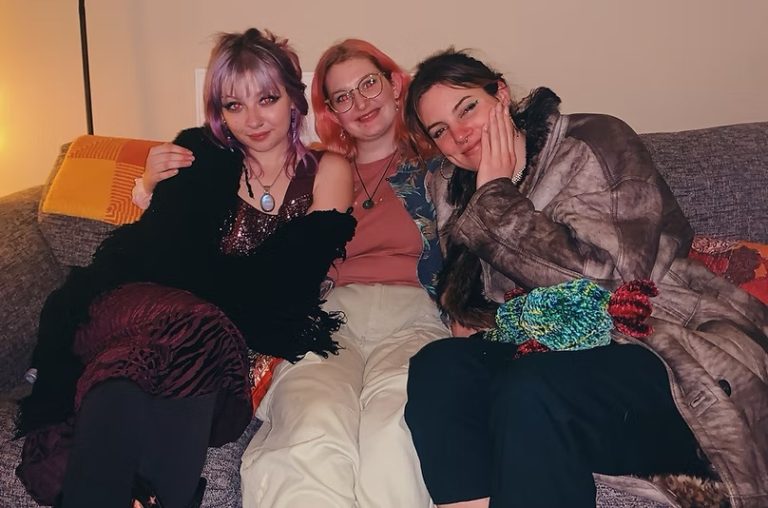Adam Leslie has always wandered among stories – daydreaming them, curating them, and now crafting his own. The Lincolnshire-born author, screenwriter, and Blackwell’s employee has stepped into the spotlight with Lost in the Garden, his debut novel that has won the 2024 Nero Book Award for Fiction. The novel is a haunting folk horror tale where three women confront the eerie, unspoken dread of Almanby, an idyllic yet perilous countryside village. Now, as he balances the quiet magic of Blackwell’s shelves with the clamour of literary acclaim, Leslie sat down with Cherwell to unravel the roots of his eerie inspiration, the allure of folk horror, and the collaborative storytelling spark that began in childhood with a Tolkienesque exercise book saga.
Leslie’s characters exist in a world where reality itself has “gone a bit dreamlike and a bit feverish” – a liminal England where “geography and directions are fluid” and “corporeal ghosts” wander. At the heart of Lost in the Garden is Heather, a “free spirit, bordering on manic pixie dream girl, but also possibly a little unhinged”. Leslie described her as having “a Peter Pan complex – she’s decided to stay seven years old forever, even though she’s now in her early to mid-20s”. Her “over-enthusiastic, wild demeanour” was amplified by the novel’s dissolved society: “There’s no real structure to rein them in. They’ve all got a bit of arrested development.”
Heather’s quest to rescue her missing boyfriend Stephen – who vanished after defying warnings to avoid Almanby – pulls in two companions. Rachel, a “much darker character”, joins the trip under cryptic pretences: “She’s got a little box to deliver to a friend there but won’t say what’s inside. Heather hears something rattling… that’s the B-plot mystery.” The third, Antonia, is a study in contrasts: a “socially anxious” aspiring comedian and the group’s sole driver, coerced into the journey. “She’s secretly in love with Heather,” Leslie revealed. “She agrees to go just to spend time with her, even though she knows nothing can happen.”
Long before Lost in the Garden unearthed the uncanny in rural England, Leslie’s storytelling instincts were sparked by two formative obsessions: the Beatles and Middle Earth. At seven, he drafted his first unsanctioned tale – a psychedelic ‘Yellow Submarine’ riff where Ringo Starr drummed away subterranean monsters. But it was a clandestine childhood collaboration that truly lit the fuse. After his Tolkien-obsessed friend Peter penned The Adventures of Drinil – a Lord of the Rings homage starring their peer group with Elvish aliases – Leslie took it upon himself to finish the third instalment.
“I didn’t ask permission,” Leslie told Cherwell. “I killed a lot of them off in a big battle because I couldn’t be bothered learning who all the characters were.” What began as a schoolboy lark, scribbling in purloined exercise books, soon bloomed into a ten-volume saga, co-written over years. “It felt like an ongoing adventure with characters I knew. I was one of them. That’s when writing stopped being homework to me and became a language of its own.”
If childhood taught Leslie that storytelling is a language, his years at Blackwell’s taught him to eavesdrop on its dialects – the whispers between reader and shelf. “Working at Blackwell’s has given me that frontline idea of what people are buying,” Leslie said. “You can read trade magazines or hear Richard Osman dissect trends, but actually seeing piles shrink, meeting readers as they gravitate to certain covers… that’s visceral.” For Leslie, the shop floor is both compass and muse: where the “daunting” sea of titles could paralyse, it instead sharpened his resolve. When it comes to literature, Leslie’s eye snags on the present: modern covers, vibrant as stained glass. “You absorb that texture all day, these glimpses into other worlds. It doesn’t make you think what the market gap is. It makes you want to add your voice to the chorus.”
Leslie’s reverence for covers as “tonal selling points” extended to how he framed his own work. But when Lost in the Garden clinched the Nero Award, his abstract ideas about marketing met the undeniable reality of mainstream recognition. “I found out a month before it was public. I had to absorb this news while pretending I hadn’t,” Leslie recalled, describing the morning he learned of the win. “It was certainly a morning of contrasts. My first customer that day was quite difficult, but I think their complaints helped ground me. Even now, seeing my name attached to the award feels strange. It doesn’t feel like my name. It feels like watching someone else with my name have a great time.”
For Leslie, the accolade is less about confetti cannons than creative freedom. “It lowered hurdles. When you’re not an established name, every project is a double burden. You’re not just creating, but you’re also constantly justifying why it deserves to exist,” he told Cherwell. The prize, he admitted, was a “weight off”, freeing him to mine his backlog of ideas. “It’s given me scope to explore weirder ideas without those same hurdles. If readers will follow me to Almanby, maybe they’ll follow me somewhere even stranger.”
That fictional village, with its whispered warnings and “unspoken dread”, is rooted in Leslie’s Lincolnshire childhood, a landscape both sparse and dense with mystery. “I grew up in the middle of nowhere, surrounded by villages you knew only by name: Navenby, Seiston, Sudbrook. You build myths about them. Navenby sounds navy blue, right? But when you finally visit, it’s just… a village.” This dissonance between the imagined and the mundane fuels the novel’s hauntological tension. “Almanby is every place you’ve never entered. The one your parents warned you about, not because it’s dangerous, but because it’s unknown.” The novel’s 1980s setting becomes its own character: a “perpetual summer” where society has begun to fray. “In a sense it’s nostalgia horror,” said Leslie. “Not for a time, but for the way a child’s imagination colonises emptiness. When there’s nothing to see or hear, their minds fill the gaps with monsters.”
Influences for the novel, however, stretched far beyond Lincolnshire’s horizons into the speculative realms of films he read about long before he saw them. “When I borrowed Fantastic Cinema by Peter Nichols from the library, I wasn’t really into films,” he admitted. “I liked Star Wars, Indiana Jones, Ghostbusters… but this book described things like Céline and Julie Go Boating, where two women uncover a haunted house stuck in a murder-mystery loop. They’d suck magical sweets to remember fragments of the story. I couldn’t conceive of it as a real film – it lived in my head as this texture.” In pre-streaming 1990s Britain, accessing such works meant “shelling out for expensive FBI tapes or waiting years for a Channel 4 broadcast”. By the time Leslie finally saw Jacques Rivette’s surrealist classic, it was nothing like he’d imagined. “The atmosphere was totally different. Lost in the Garden is my collage of those gaps – the leftover ideas from films I’d mythologised.”
Among Leslie’s spectrum of projects that the award has made him feel more confident to pursue is a collaboration with Peter, his childhood co-author of Adventures of Drinil. “We’ve been writing together for 37 years,” he clarified, laughing. “There are a couple pet projects we’ve kept on the back burner. You think, ‘wouldn’t it be nice to get these off the ground’? Now it’s less ‘pipe dream’, more possible. It’s on us to make them good enough that people want to read them.”
Leslie’s counsel to aspiring writers distils lessons from his own zigzag path: “Write the book you want to read – the one that’d be your favourite if someone else wrote it. Don’t martyr yourself to ‘should’. Joyless struggles make joyless books. Finish things. It doesn’t matter how bad the first draft is. Writing’s not real-time – you can fix anything, but only if you reach the end.”











